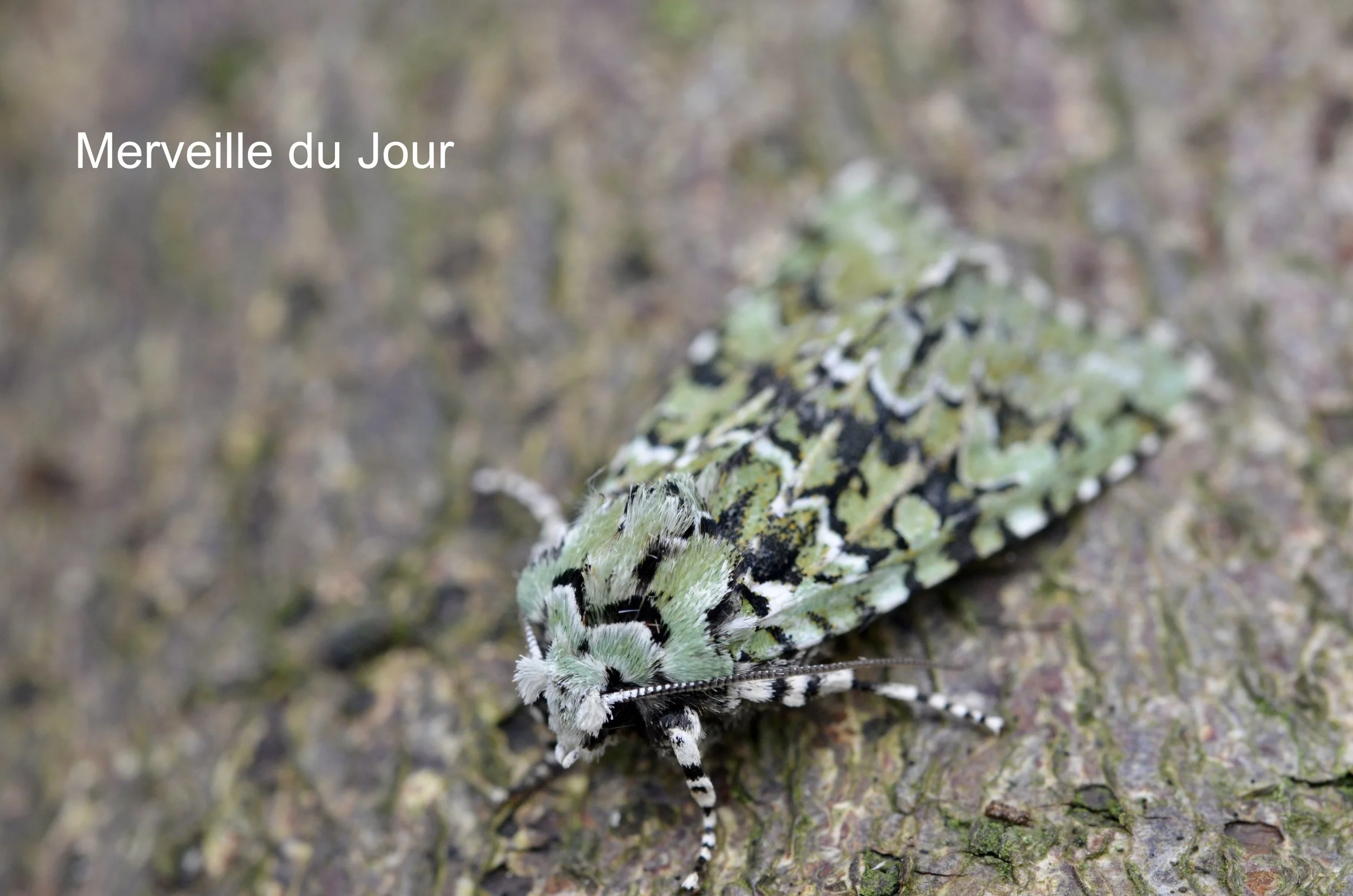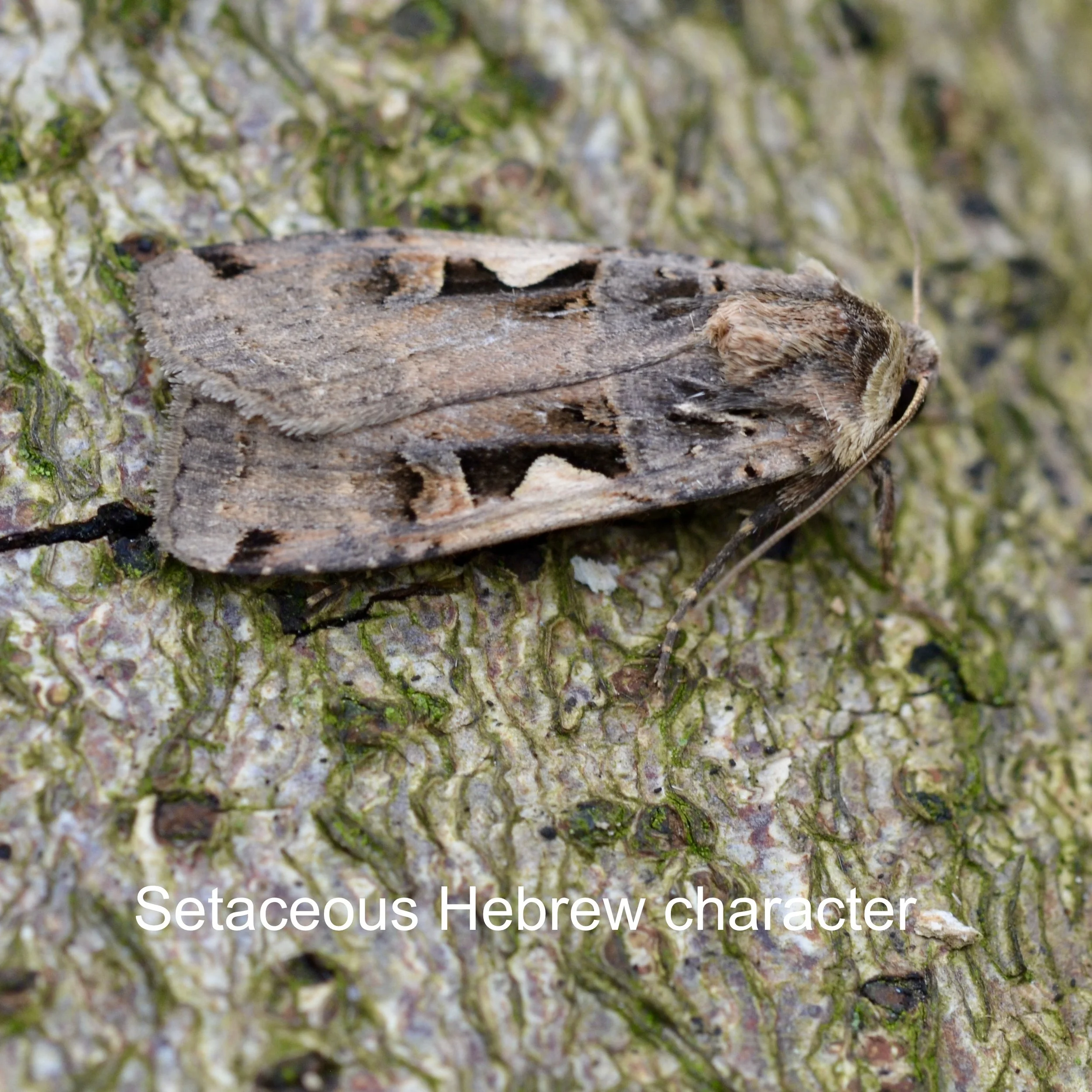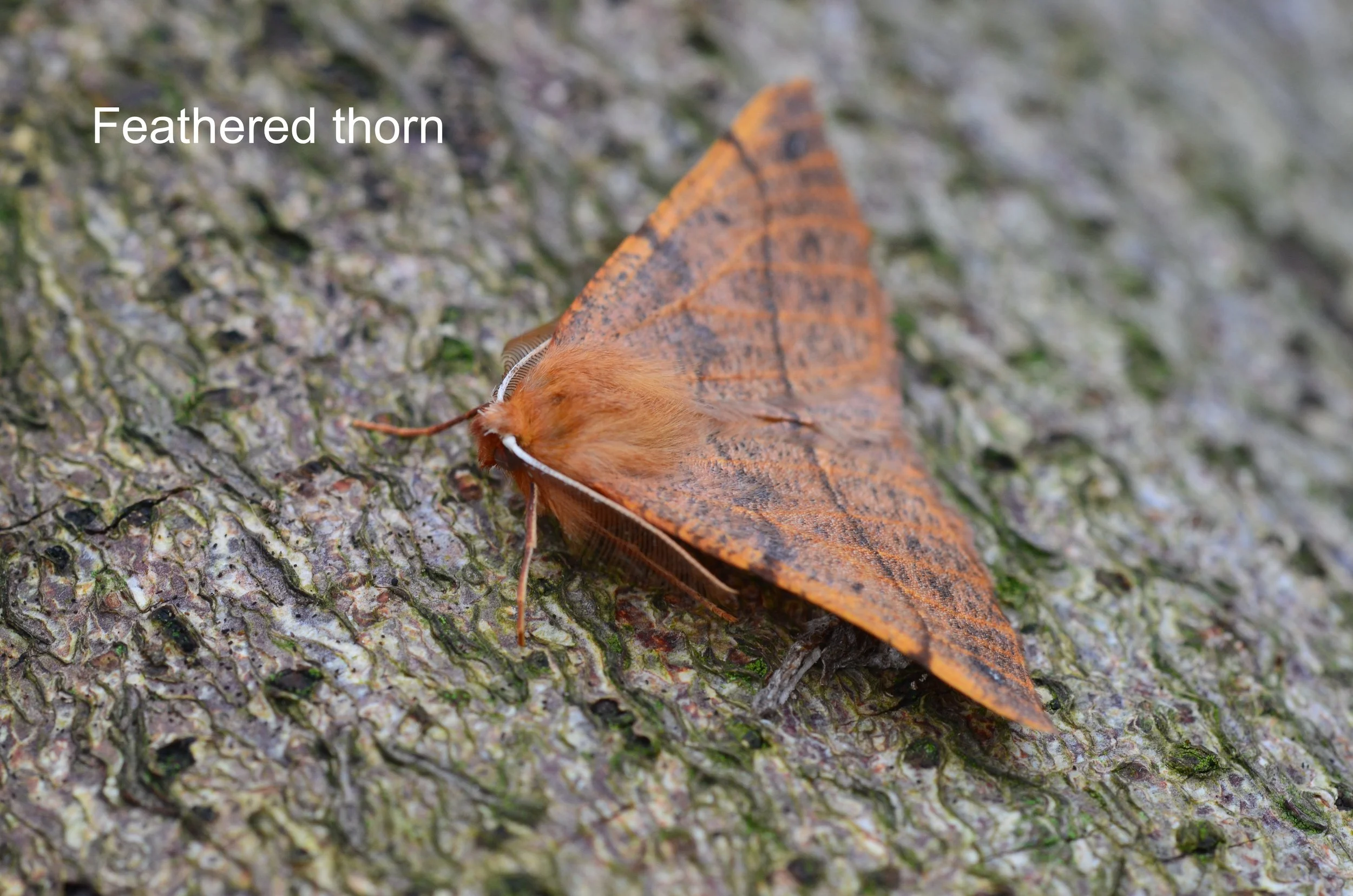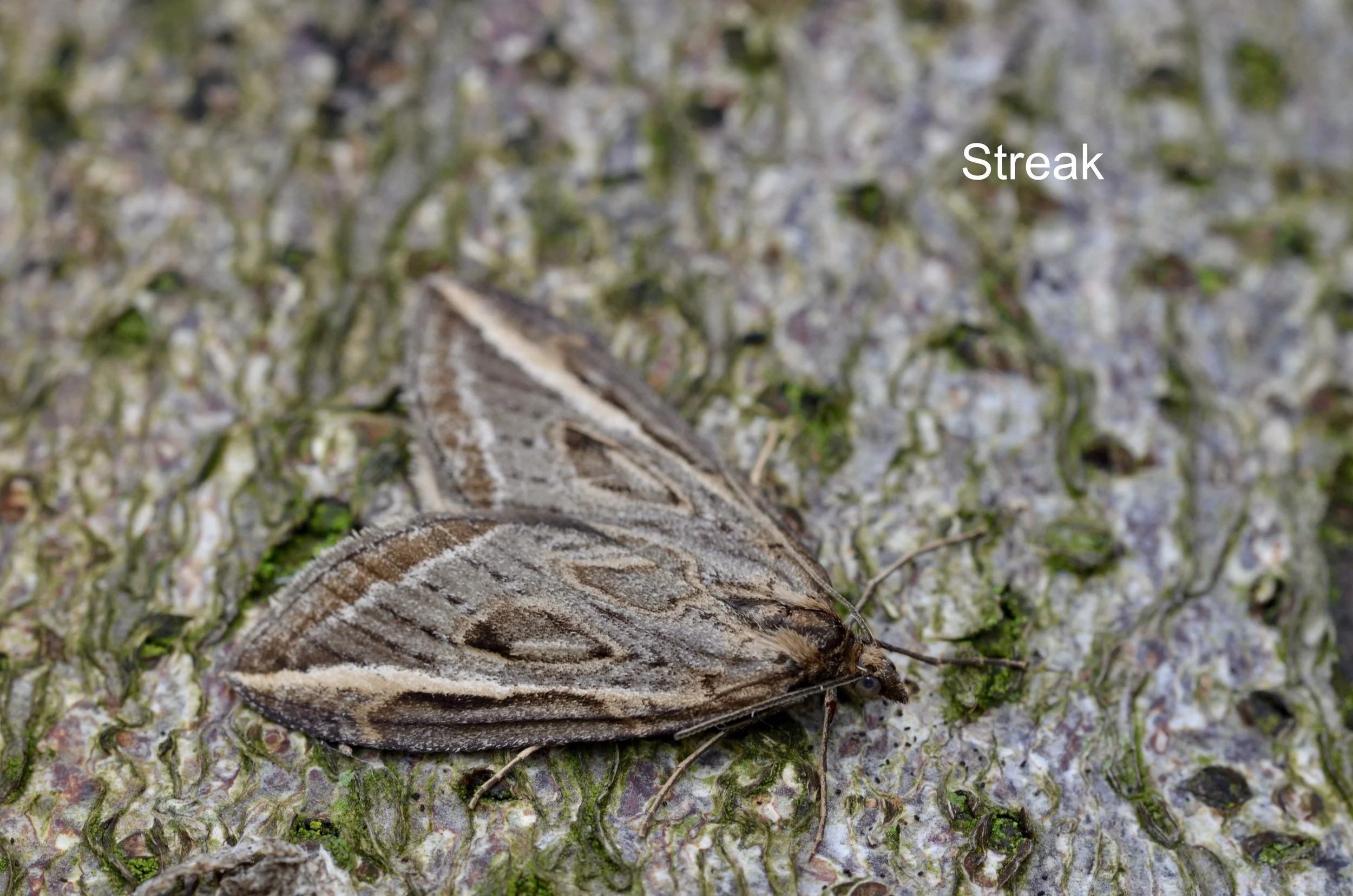October moth night..
We returned to our mothing last night.
Moths are fascinating creatures. They’re often overlooked because many lack the pizzazz of their butterfly cousins. Although, by reputation subfusc, many are wonderfully coloured, shaped and textured. Importantly too, their needs are often highly specific, making them the ‘canaries in the coal mine’ alerting us to adverse environmental changes.
Last night, evening air had a slight chill and the common wasps and European hornets that had been attracted to the moth light and prevented us trapping in late summer, have now quietened.
Sixty moths of seventeen species altogether.
Merveille du Jour is one of our prettiest and most-distinctive moths. Four of this species last night - our highest figure for a single night. Perhaps their numbers have increased as has the amount of mature ivy we now have: their larval food plants are oaks.
Setaceous Hebrew character: surely the best vernacular name amongst moths? Setaceous indicates bristles - presumably the tuft on the thorax? The ‘Hebrew character’ refers to the apparent resemblance of wing marks to Hebrew lettering. Many moths were given names by dusty Victorian clergymen hobbyists who sometimes drew on their biblical knowledge as inspiration for names.
Its larval food plants include nettles and dead-nettles.
Feathered thorns are striking moths. We’re well-blessed for them - perhaps because their larval food plants include many plants our garden has like hawthorn, crab apple, dog rose, goat willow, hazel, oak and birch
Streak sounds like a Marvel character of a moth. Its sombre colouring and subtle markings are not the typical costume of cartoon heroes.
Its larval food plant is broom so probably local to sandy sites where broom flourishes.




